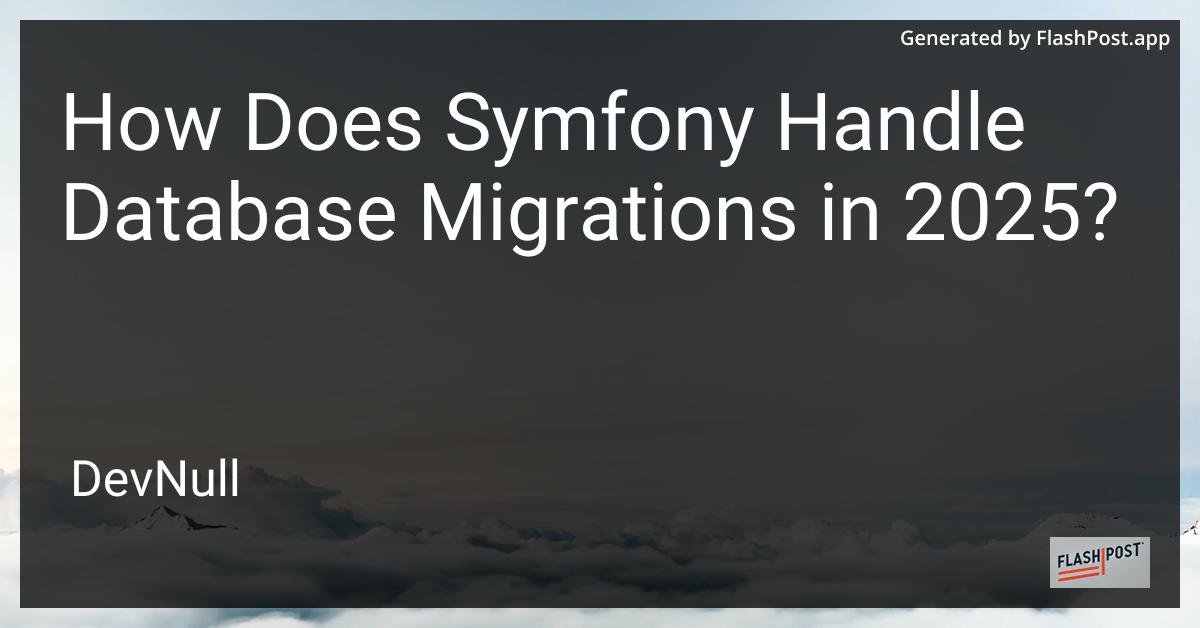

How Does Symfony Handle Database Migrations in 2025?
In today’s rapidly evolving tech landscape, efficiently managing database migrations is a vital component of web application development. Symfony, a leading PHP framework, has consistently evolved to provide streamlined solutions for developers. As of 2025, Symfony’s approach to database migrations continues to enhance developer productivity and application stability. This article delves into how Symfony handles database migrations in 2025, highlighting its features, improvements, and best practices.
Understanding Symfony Database Migrations
Symfony incorporates powerful tools and plugins to assist developers in handling database migrations. These tools ensure that database schema changes are consistently and reliably applied across all environments. The primary tool used for migrations in Symfony is Doctrine Migrations. Doectrine Migrations is an integral part of Symfony’s ecosystem, providing a robust interface for managing database schema changes.
Key Features of Symfony’s Database Migrations in 2025
-
Version Control Integration: Symfony’s migrations are now seamlessly integrated with version control systems. This feature ensures that all changes are tracked, and teams can easily collaborate on database schema evolution.
-
Enhanced Rollback Functionality: The 2025 edition of Symfony offers improved rollback mechanisms. Developers can revert changes with precision, a feature crucial for maintaining application stability during unforeseen issues.
-
Automated Testing and Validation: Symfony migrations now include automated testing capabilities. This ensures that any schema changes are validated against real-world data scenarios, reducing the risk of errors.
-
Schema Synchronization: With distributed systems becoming more prevalent, Symfony’s ability to synchronize schema changes across multiple databases ensures consistency and data integrity.
-
Intuitive Command-Line Interface (CLI): Symfony 2025 enhancements include a more intuitive CLI for migration commands. This allows developers to efficiently create, execute, and version migrations.
Best Practices for Symfony Database Migrations
-
Incremental Changes: Instead of large, sweeping changes, aim to make small, incremental database migrations. This minimizes the risk of errors and eases troubleshooting.
-
Backup Regularly: Always backup your database before performing migrations. While Symfony handles rollbacks, backups offer a safety net for unprecedented issues.
-
Use Doctrine Annotations: Utilize Doctrine annotations in your entity classes to manage schema updates automatically. This minimizes manual intervention and potential human errors.
-
Test in Staging: Always perform migrations in a staging environment before applying them to production databases. This ensures that any issues are caught early in the deployment process.
Launching Symfony on Cloud Platforms
If you’re considering deploying your Symfony application on a cloud service, here are some resources to assist you:
-
Launching Symfony on DigitalOcean: A comprehensive guide on setting up Symfony applications on DigitalOcean’s infrastructure.
-
Cloud Hosting for Symfony: Explore the benefits and steps to host your Symfony application on cloud platforms for increased scalability and performance.
Additional Resources
- Registering Twig Filters in Symfony: Learn how to enhance your Symfony applications by registering custom Twig filters.
Symfony’s approach to database migrations in 2025 underlines its commitment to providing developers with the tools needed for efficient and secure application development. By embracing best practices and leveraging Symfony’s robust tools, developers can ensure their projects are future-proof and ready for the challenges of tomorrow.
